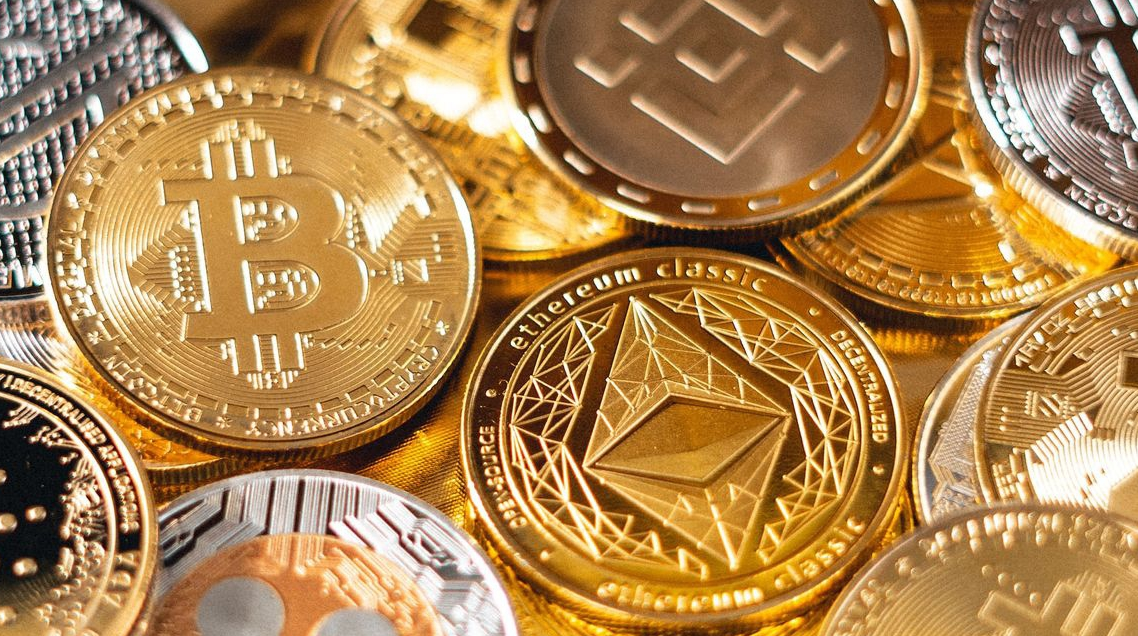The cryptocurrency landscape continues to evolve at breakneck speed, and identifying the best altcoins to invest in 2025 has become crucial for both seasoned investors and newcomers entering the digital asset space. As Bitcoin maintains its dominance, alternative cryptocurrencies (altcoins) present unprecedented opportunities for portfolio diversification and potentially higher returns. With over 20,000 cryptocurrencies in existence today, navigating this complex market requires careful analysis, strategic thinking, and a deep understanding of emerging trends. The best altcoins to invest in 2025 aren’t just digital currencies; they’re revolutionary technologies addressing real-world problems across industries like finance, healthcare, supply chain management, and entertainment. This comprehensive guide examines the most promising alternative cryptocurrencies positioned for significant growth in 2025. We’ll explore fundamental analysis, technical indicators, market trends, and regulatory developments that could impact your investment decisions. Whether you’re looking to diversify your existing crypto portfolio or make your first altcoin investment, understanding these opportunities is essential for maximizing your potential returns while managing risk effectively.
Understanding Altcoins: Beyond Bitcoin

Alternative cryptocurrencies, commonly known as altcoins, represent every digital currency other than Bitcoin. These innovative blockchain projects serve diverse purposes, from facilitating smart contracts and decentralized finance (DeFi) applications to powering non-fungible token (NFT) marketplaces and gaming ecosystems. The altcoin market has matured significantly since Bitcoin’s inception, with many projects demonstrating real utility and adoption. Unlike Bitcoin’s primary function as digital gold, altcoins often focus on specific use cases, making them attractive investment opportunities for those seeking exposure to particular sectors or technologies. Modern altcoins fall into several categories: platform tokens that power blockchain ecosystems, utility tokens used within specific applications, governance tokens that provide voting rights in decentralized protocols, and stablecoins pegged to traditional currencies. Understanding these distinctions helps investors make informed decisions when selecting the best altcoins to invest in 2025.
Key Factors to Consider When Choosing Altcoins
Technology and Innovation
The underlying technology represents the foundation of any successful altcoin investment. Projects with robust, scalable, and innovative blockchain architectures typically outperform those with outdated or limited technological capabilities. Look for cryptocurrencies implementing cutting-edge solutions like layer-2 scaling, zero-knowledge proofs, or novel consensus mechanisms.
Team and Development Activity
A strong development team with proven track records significantly increases an altcoin’s success probability. Active development, regular updates, and transparent communication with the community indicate a healthy project. GitHub activity, developer conferences, and partnership announcements provide valuable insights into a project’s momentum.
Market Adoption and Partnerships
Real-world adoption drives long-term value creation in the cryptocurrency space. Projects securing partnerships with established corporations, government agencies, or other blockchain protocols demonstrate practical utility and market validation. User growth metrics, transaction volumes, and ecosystem expansion indicate genuine adoption rather than speculative interest.
Tokenomics and Supply Mechanics
Understanding a cryptocurrency’s tokenomics—how tokens are distributed, utilized, and governed—is crucial for investment decisions. Factors like total supply, inflation rates, burning mechanisms, and staking rewards directly impact token value over time. Well-designed tokenomics align stakeholder incentives and create sustainable economic models.
Top Best Altcoins to Invest in 2025
Ethereum (ETH): The Smart Contract Pioneer
Ethereum remains a cornerstone of the cryptocurrency ecosystem, powering thousands of decentralized applications (dApps) and smart contracts. Despite facing scalability challenges, Ethereum’s transition to Proof-of-Stake consensus and ongoing layer-2 developments position it as one of the best altcoins to invest in 2025. The Ethereum network hosts the majority of DeFi protocols, NFT marketplaces, and Web3 applications. With upcoming upgrades focusing on scalability, energy efficiency, and user experience, Ethereum’s ecosystem continues expanding. Major corporations and financial institutions increasingly recognize Ethereum’s potential, with many integrating its technology into their operations. Recent developments include successful implementation of EIP-1559, which introduced token burning mechanisms, and the merge to Proof-of-Stake, significantly reducing energy consumption. These improvements, combined with layer-2 solutions like Polygon and Arbitrum, address previous scalability concerns while maintaining security and decentralization.
Solana (SOL): High-Performance Blockchain
Solana has emerged as a leading Ethereum alternative, offering high throughput and low transaction costs. Its unique Proof-of-History consensus mechanism enables processing thousands of transactions per second, making it attractive for high-frequency applications like gaming and DeFi. The Solana ecosystem has experienced remarkable growth, with numerous projects building on its platform. From decentralized exchanges and lending protocols to NFT marketplaces and gaming applications, Solana’s versatility makes it a compelling investment opportunity. Despite experiencing network outages in the past, continuous improvements and growing developer adoption suggest strong future potential.
Cardano (ADA): Research-Driven Development
Cardano distinguishes itself through academic rigor and peer-reviewed research. Its methodical approach to blockchain development prioritizes sustainability, scalability, and interoperability. The recent implementation of smart contract functionality through the Alonzo upgrade opens new possibilities for dApp development. Cardano’s focus on emerging markets and financial inclusion aligns with global digitization trends. Partnerships in Africa and other developing regions demonstrate practical blockchain implementation for identity management, supply chain tracking, and financial services. This real-world adoption potential makes Cardano attractive for long-term investors.
Polygon (MATIC): Ethereum Scaling Solution
Polygon addresses Ethereum’s scalability limitations by providing layer-2 scaling solutions. Its network of interconnected blockchains offers faster and cheaper transactions while maintaining compatibility with Ethereum’s ecosystem. Major projects like Uniswap, Aave, and Curve have deployed on Polygon, increasing its utility and adoption. The platform’s commitment to carbon neutrality and sustainability appeals to environmentally conscious investors and institutions. Polygon’s versatility in supporting various scaling solutions, from sidechains to state channels, positions it well for diverse use cases as the blockchain space evolves.
Chainlink (LINK): Decentralized Oracle Network
Chainlink provides essential infrastructure for smart contracts by connecting blockchain networks with real-world data. Its decentralized oracle network enables smart contracts to access external information, making complex applications possible across various industries. The growing demand for hybrid smart contracts that combine on-chain and off-chain data drives Chainlink’s adoption. Partnerships with major corporations and integration with multiple blockchain platforms demonstrate its critical role in the broader crypto ecosystem. As smart contract adoption increases, Chainlink’s utility and value proposition strengthen.
Emerging Altcoins with High Growth Potential

Avalanche (AVAX): Subnet Architecture Innovation
Avalanche’s unique subnet architecture allows developers to create customized blockchain networks while maintaining interoperability. This flexibility attracts enterprises requiring specific blockchain features without compromising on security or decentralization. The platform’s partnerships with traditional finance institutions and government organizations highlight its enterprise appeal. Avalanche’s focus on compliance and regulatory clarity positions it well for institutional adoption, making it one of the best altcoins to invest in 2025 for risk-conscious investors.
Polkadot (DOT): Cross-Chain Interoperability
Polkadot enables different blockchain networks to communicate and share data through its parachain architecture. This interoperability solution addresses one of the blockchain industry’s most significant challenges: connecting isolated networks. The platform’s governance model, which allows DOT holders to vote on network upgrades and parachain auctions, creates an engaged community invested in the ecosystem’s success. As blockchain interoperability becomes increasingly important, Polkadot’s technology and first-mover advantage provide competitive advantages.
Cosmos (ATOM): Internet of Blockchains
Cosmos facilitates blockchain interoperability through its Inter-Blockchain Communication (IBC) protocol. The platform enables sovereign blockchain networks to interact while maintaining their unique properties and governance structures. The Cosmos ecosystem includes numerous successful projects like Terra (before its collapse), Binance Smart Chain, and Crypto.org Chain. This diversity demonstrates the platform’s versatility and adoption potential across different use cases and markets.
Sector-Specific Investment Opportunities
DeFi (Decentralized Finance) Tokens
The decentralized finance sector continues revolutionizing traditional financial services through blockchain technology. Projects like Uniswap (UNI), Compound (COMP), and MakerDAO (MKR) lead this transformation by providing decentralized trading, lending, and stablecoin services. DeFi protocols typically generate revenue through transaction fees, making their tokens valuable for both governance and profit-sharing purposes. As traditional finance increasingly adopts DeFi principles, these tokens represent exposure to a growing market segment.
Gaming and Metaverse Cryptocurrencies
Blockchain gaming and metaverse projects represent significant growth opportunities as virtual worlds become mainstream. Tokens like Axie Infinity (AXS), The Sandbox (SAND), and Decentraland (MANA) enable users to own virtual assets and participate in digital economies. The gaming industry’s massive size and the growing acceptance of digital ownership through NFTs create substantial market opportunities. As major gaming companies explore blockchain integration, gaming-focused cryptocurrencies could experience significant appreciation.
Privacy-Focused Cryptocurrencies
Despite regulatory challenges, privacy coins address legitimate needs for financial confidentiality and data protection. Projects like Monero (XMR), Zcash (ZEC), and Secret Network (SCRT) use advanced cryptographic techniques to enable private transactions. Increasing concerns about digital surveillance and data privacy could drive demand for privacy-focused cryptocurrencies. However, regulatory risks must be carefully considered when investing in this sector.
Investment Strategies and Risk Management
Dollar-Cost Averaging (DCA)
Dollar-cost averaging involves making regular purchases regardless of price fluctuations, reducing the impact of market volatility on investment returns. This strategy works particularly well for long-term altcoin investments, as it smooths out price volatility while building positions gradually.
Portfolio Diversification
Diversifying across multiple altcoins, market sectors, and investment timeframes reduces overall portfolio risk. Consider allocating investments across established cryptocurrencies like Ethereum and emerging projects with high growth potential.
Research and Due Diligence
Thorough research remains the foundation of successful cryptocurrency investing. Analyze project fundamentals, team backgrounds, partnership announcements, and market trends before making investment decisions. Stay informed about regulatory developments and market sentiment changes that could impact your investments.
Risk Assessment and Position Sizing
Cryptocurrency investments carry inherent risks, including volatility, regulatory uncertainty, and technology failures. Only invest amounts you can afford to lose, and consider altcoins as part of a broader investment portfolio that includes traditional assets.
Regulatory Considerations and Market Outlook
Global Regulatory Environment
Regulatory clarity continues evolving worldwide, with some jurisdictions embracing cryptocurrency innovation while others impose restrictions. Understanding regulatory trends in major markets helps inform investment decisions and risk assessment. The United States, European Union, and Asia-Pacific regions are developing comprehensive cryptocurrency frameworks that could significantly impact market dynamics. Projects demonstrating compliance readiness and regulatory engagement may outperform those ignoring regulatory requirements.
Institutional Adoption Trends
Increasing institutional adoption drives cryptocurrency market maturation and stability. Major corporations adding cryptocurrencies to their balance sheets, financial institutions offering crypto services, and pension funds exploring digital asset allocations create substantial demand. This institutional interest particularly benefits established altcoins with proven track records, regulatory clarity, and institutional-grade infrastructure. Projects positioning themselves for institutional adoption could experience significant value appreciation.
Technical Analysis and Market Indicators
On-Chain Metrics
Analyzing blockchain data provides insights into network health and adoption trends. Metrics like active addresses, transaction volumes, total value locked (TVL), and developer activity indicate genuine usage versus speculative interest.
Market Sentiment Analysis
Social media sentiment, news coverage, and community engagement metrics help gauge market psychology and potential price movements. However, these indicators should complement fundamental analysis rather than drive investment decisions independently.
Macro Economic Factors
Broader economic conditions, including inflation rates, interest rates, and currency fluctuations, influence cryptocurrency markets. Understanding these relationships helps investors position their portfolios for different economic scenarios.
Building Your Altcoin Investment Portfolio
Asset Allocation Strategies
Consider allocating larger portions to established altcoins like Ethereum and Solana while dedicating smaller amounts to higher-risk, higher-reward emerging projects. This balanced approach provides exposure to growth opportunities while managing downside risk.
Entry and Exit Strategies
Develop clear criteria for entering and exiting positions based on fundamental changes, technical indicators, or portfolio rebalancing needs. Having predetermined strategies helps avoid emotional decision-making during market volatility.
Monitoring and Adjustment
Regularly review your altcoin investments, staying informed about project developments, market changes, and portfolio performance. Adjust allocations based on changing market conditions and investment objectives.
Common Mistakes to Avoid
FOMO (Fear of Missing Out)
Avoid making investment decisions based solely on price momentum or social media hype. Successful investing requires patience, research, and disciplined decision-making rather than emotional reactions to market movements.
Overconcentration
Concentrating too much wealth in a single altcoin or sector increases portfolio risk unnecessarily. Diversification across projects, sectors, and timeframes provides better risk-adjusted returns over time.
Ignoring Security
Protecting your cryptocurrency investments through proper wallet security, two-factor authentication, and avoiding phishing scams is crucial. Lost or stolen cryptocurrencies cannot be recovered, making security paramount.
Future Trends and Opportunities
Web3 and Decentralization
The transition toward decentralized internet infrastructure creates opportunities for altcoins powering Web3 applications. Projects enabling decentralized storage, computing, and communication could benefit from this technological shift.
Central Bank Digital Currencies (CBDCs)
Government-issued digital currencies may increase overall cryptocurrency adoption while creating competition for existing projects. Understanding CBDC developments helps anticipate market impacts and investment opportunities.
Sustainability and ESG Considerations
Environmental, social, and governance (ESG) factors increasingly influence investment decisions. Cryptocurrencies with sustainable consensus mechanisms and positive social impact may attract more institutional and retail investment.
Conclusion
Identifying the best altcoins to invest in 2025 requires careful analysis of technology, adoption, market trends, and risk factors. The cryptocurrency landscape offers unprecedented opportunities for investors willing to research thoroughly and manage risk appropriately. From established platforms like Ethereum and Solana to emerging projects in DeFi, gaming, and Web3, the altcoin market provides diverse investment opportunities across various sectors and risk profiles. Success depends on staying informed, diversifying appropriately, and maintaining a long-term investment perspective.




